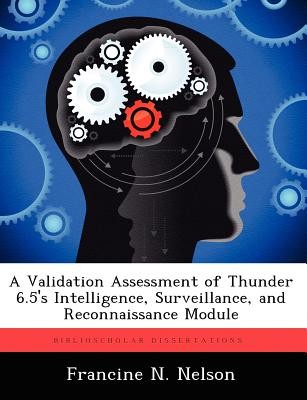
- We will send in 10–14 business days.
- Author: Francine N Nelson
- Publisher: BiblioScholar
- ISBN-10: 1249586895
- ISBN-13: 9781249586890
- Format: 18.9 x 24.6 x 1 cm, softcover
- Language: English
- SAVE -10% with code: EXTRA
A Validation Assessment of Thunder 6.5's Intelligence, Surveillance, and Reconnaissance Module (e-book) (used book) | bookbook.eu
Reviews
Description
A validation assessment of THUNDER 6.5's Intelligence, Surveillance, and Reconnaissance (ISR) module is accomplished using formulational and experimental validation techniques. A comparison of ISR purposes and processes according to military doctrine is made with the purposes and processes of ISR implemented within THUNDER 6.5. This comparison provides an overview of the process, an understanding of the level of aggregation within THUNDER, insight into possible problem areas in THUNDER, and a basis for improving THUNDER ISR processes. Sensitivity analysis of the ISR parameters as they relate to the Quality, Quantity, and Timeliness of ISR is also presented to provide insight into the responsiveness of THUNDER to changes in ISR capability for selected battle outcomes. Linear Regression and a Face-Centered Central Composite Design were used to generate a response surface. Ninety-percent confidence intervals were used to determine differences in mean response among the full factorial design points.
EXTRA 10 % discount with code: EXTRA
The promotion ends in 18d.21:48:16
The discount code is valid when purchasing from 10 €. Discounts do not stack.
- Author: Francine N Nelson
- Publisher: BiblioScholar
- ISBN-10: 1249586895
- ISBN-13: 9781249586890
- Format: 18.9 x 24.6 x 1 cm, softcover
- Language: English English
A validation assessment of THUNDER 6.5's Intelligence, Surveillance, and Reconnaissance (ISR) module is accomplished using formulational and experimental validation techniques. A comparison of ISR purposes and processes according to military doctrine is made with the purposes and processes of ISR implemented within THUNDER 6.5. This comparison provides an overview of the process, an understanding of the level of aggregation within THUNDER, insight into possible problem areas in THUNDER, and a basis for improving THUNDER ISR processes. Sensitivity analysis of the ISR parameters as they relate to the Quality, Quantity, and Timeliness of ISR is also presented to provide insight into the responsiveness of THUNDER to changes in ISR capability for selected battle outcomes. Linear Regression and a Face-Centered Central Composite Design were used to generate a response surface. Ninety-percent confidence intervals were used to determine differences in mean response among the full factorial design points.


Reviews